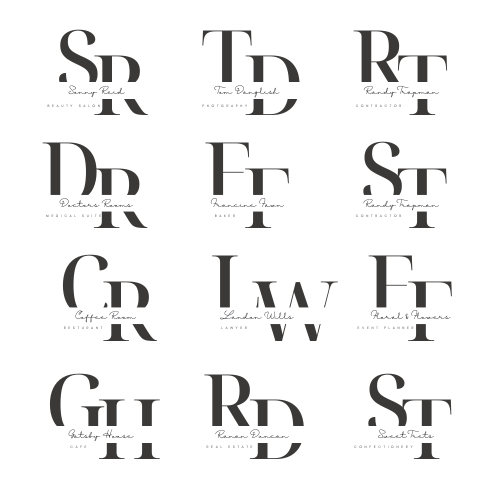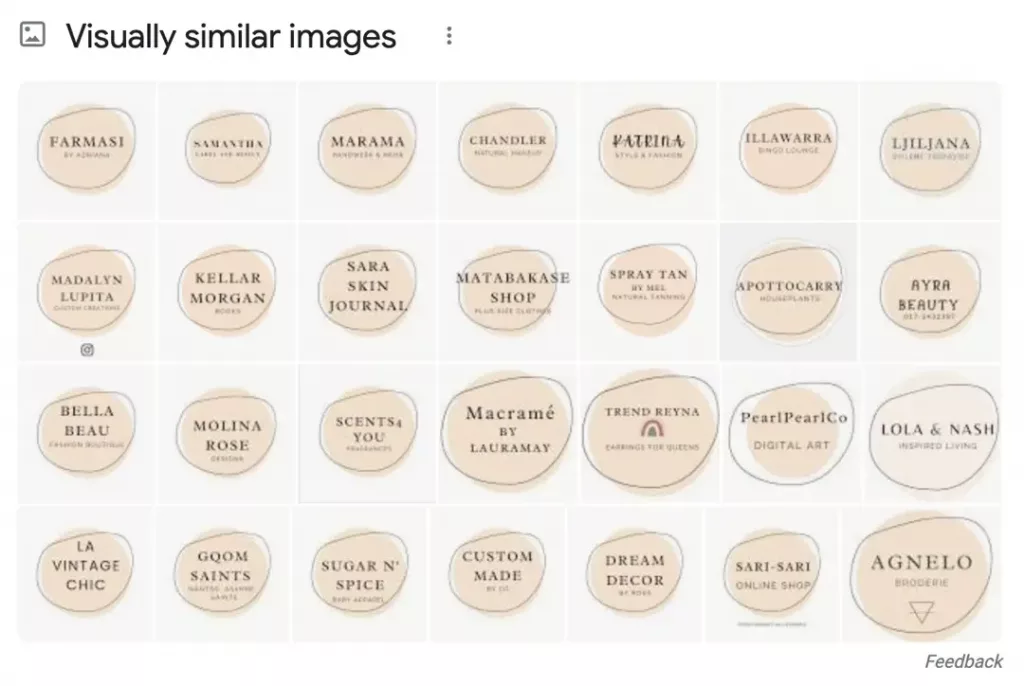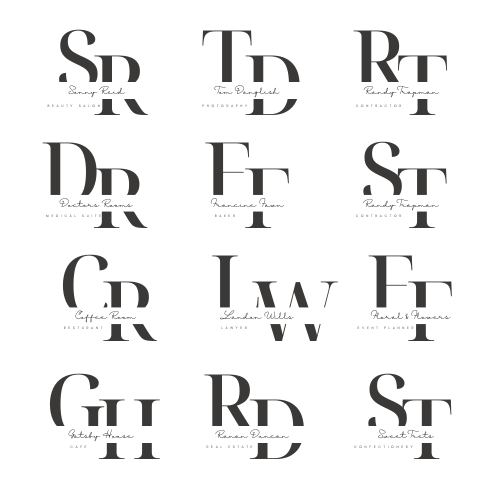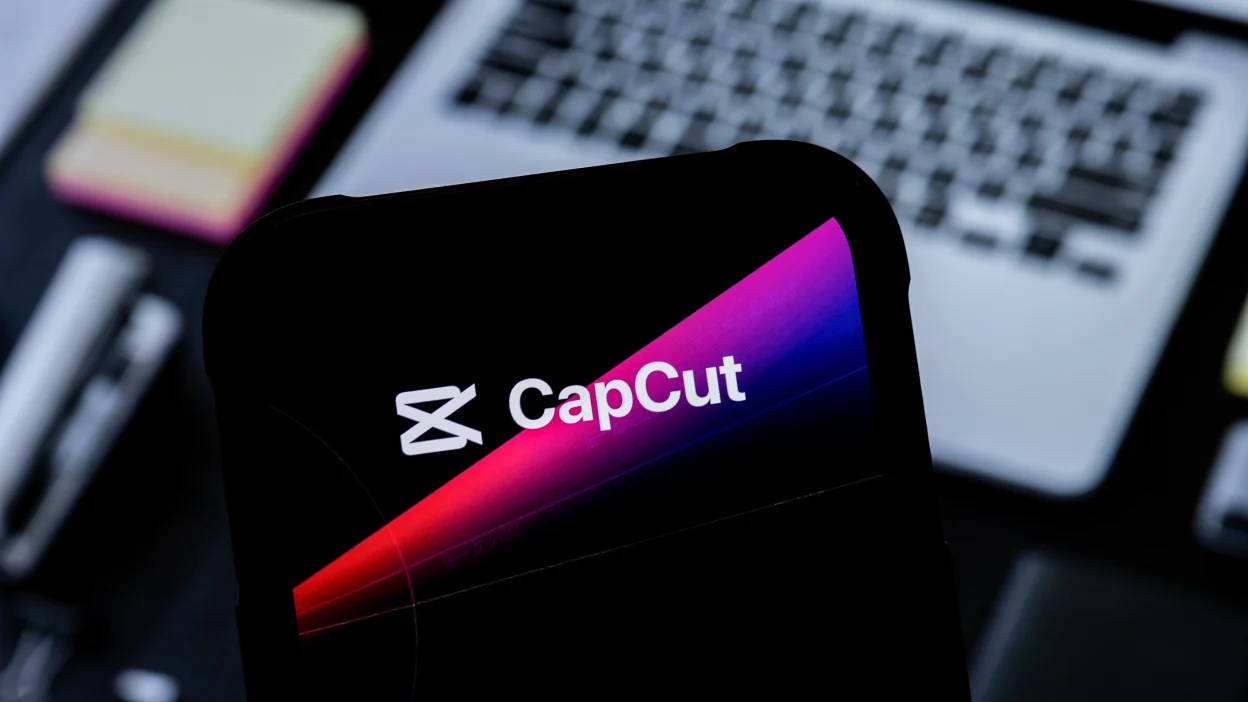Using Canva to design a business logo is often considered a bad idea, especially among professional graphic designers and brand designers.


The perfect example above showcases how many business names we can create with the simple use of Canva; while this is an easy fix and cost-effective, you don’t technically own a logo design made in Canva. If you read the fine print, the only way to use a Canva logo is if you either upload a logo that you made in another program or if you stick to their basic shapes, lines, and fonts. You will not be able to Trademark this either – think products and technologies.
You can’t trademark stock images either because you do not own the source material; you will undoubtedly have issues filing for trademarks with imagery that incorporates stock content.
iStock is one of the internet’s most popular stock image sites, and their legal license agreement policies are quite enlightening in the context of what we’re discussing here.
They specifically forbid using their content in logos unless you pay for a license to use that specific piece of visual media, as outlined in the excerpt below (from Section 3, Restricted Uses, paragraph D).

Here’s why:
1. Lack of Uniqueness
Canva’s templates are accessible to everyone, meaning your logo might look similar to many others. EXample above! Unique branding is crucial for standing out, but Canva’s generic templates don’t offer that.
2. Unprofessional Appearance
Professional logos require detailed design elements to look polished. Canva’s simplicity often results in logos that appear basic and amateurish, lacking the sophistication that a professional logo should have.
3. Limited Customization
Compared to professional design tools like Adobe Illustrator, Canva offers limited customization options. This restriction makes it difficult to create complex designs or modify text and graphics effectively.
4. Limited Font Choices
Canva’s font library is limited and may not suit all branding needs. Matching your logo’s fonts with your website or other branding materials can be challenging, compromising the consistency of your brand identity.
5. Trademark Issues
Logos created with Canva cannot be trademarked. This limitation can lead to legal issues, especially if similar designs are used by multiple businesses.
6. No True Vector Export
Canva doesn’t support true vector file exports, which are essential for scaling your logo without losing quality. This limitation can result in blurry or pixelated images when printed on larger materials.
7. Low-Quality Exports
Canva logos are often low resolution, which affects their quality when used in various applications, from websites to marketing materials.
Real-World Examples
Consider the logos of major companies:
- The BBC spent about $180,000 on their logo in 1997.
- BP rebranded in 2000 at a cost of £4.6 million.
- Pepsi’s logo redesign in 2008 cost $1,000,000.
- The London Olympics logo in 2012 cost $625,000.
These examples highlight the importance of investing in a professional logo that stands the test of time and helps your business stand out.
Why Does Your Business Need a Logo?
A well-designed logo establishes your professionalism and builds trust in your services. It conveys who you are, what you do, and how your business benefits clients, even if they have no prior knowledge or experience with you.
An unprofessional logo can make people doubt your ability to deliver quality products and services. Have you ever chosen one company over another because it appeared more professional? People make snap judgments, and poor design can create uncertainty.
A strong logo helps you stand out to consumers, makes your brand memorable, and fosters positive associations. Logos have a deep symbolic connection with people’s memories and emotions. Take Nike, for example. The swoosh is simple, but it embodies Nike’s vision of making the world better through running.
That powerful idea defines their brand, and their logo communicates it, empowering their business to thrive. With time and consistent branding, your logo can achieve the same for your business.
A good logo communicates value and creates it. Investing in your logo design is crucial for boosting your credibility and attracting consumers.
Conclusion
While Canva is a great tool for simple graphic design tasks, it falls short when creating a professional business logo. The limitations in customization, font choices, trademarking, and export quality make it unsuitable for businesses that want a unique and polished brand identity. For a logo that truly represents your business and stands out, we would love to be part of your development process and grow your business.




